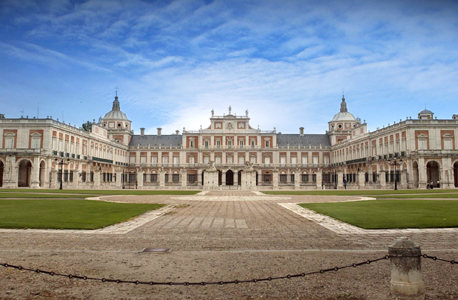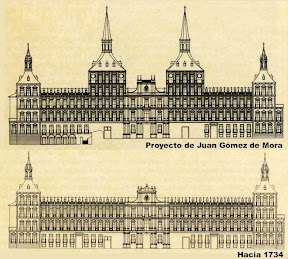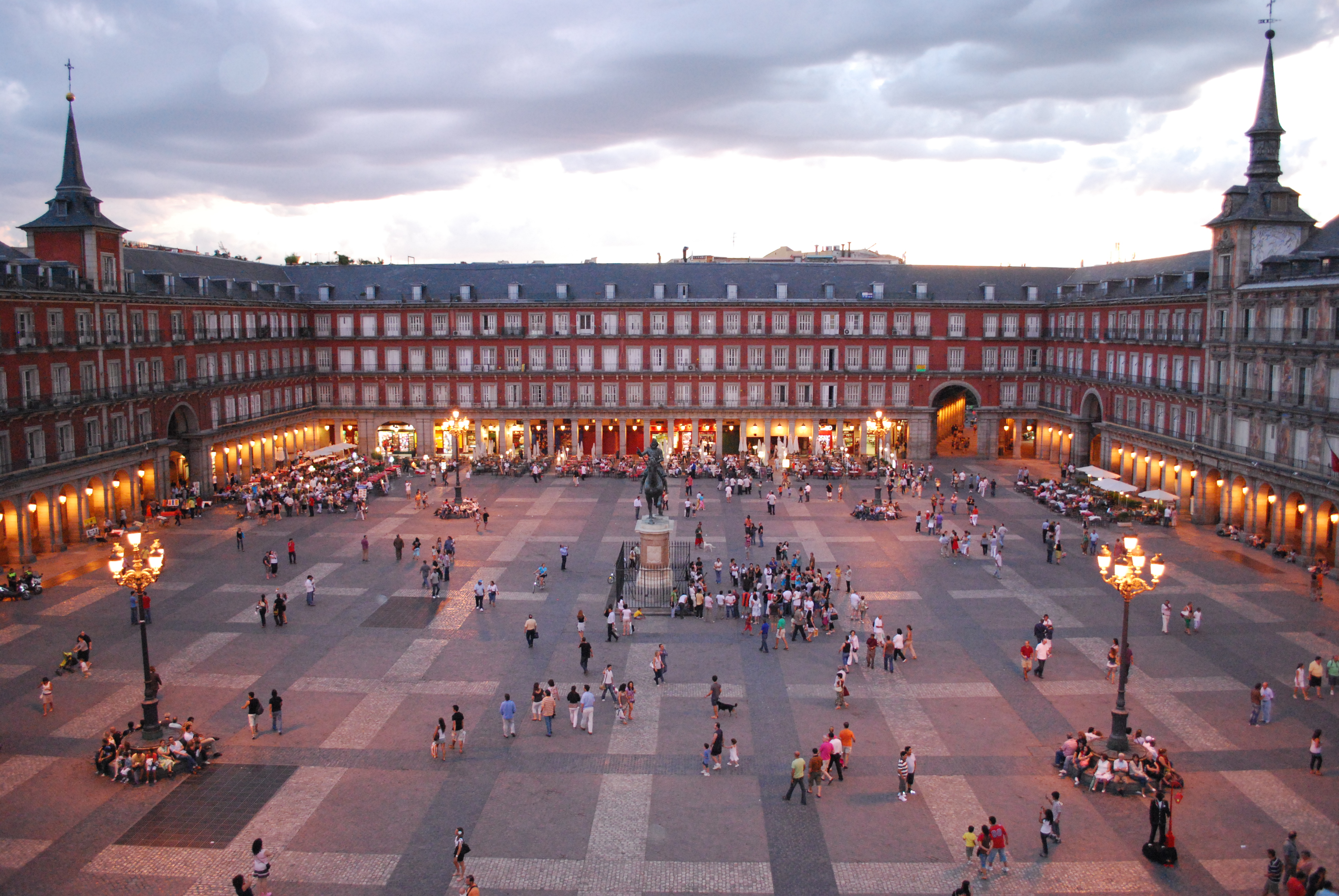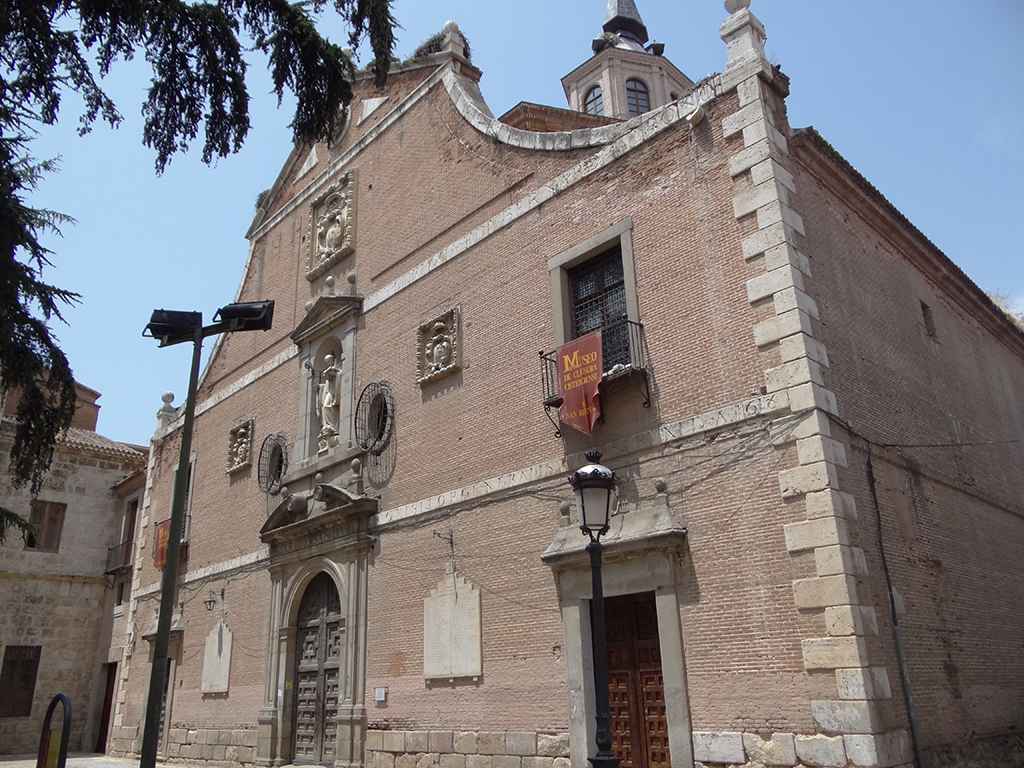 |
| (Portrait of Juan Bautista de Toledo) |
Juan
Bautista de Toledo (1515 - 1567) was a Spanish architect. He was educated in
Italy, in the Italian High Renaissance. As many Italian renaissance architects,
he had experience in both architecture and military and civil public works.
Born, either in Toledo or in Madrid around 1515. He died May 19, 1567 in
Madrid, and was buried in Madrid, in the choir of the primitive “Convento de Santo
Tomás, Iglesia de la Santa Cruz”. Perhaps he
started his career in architecture in Rome, between 1534 and 1541, working for
Michelangelo and Pope Paul III, completing the facade and courtyard of Palazzo
Farnese. Then, possibly, he continues his
training in the construction site of St. Peter's, under the direction of
Antonio da Sangallo the Younger. Another hypothesis is that he worked for
Antonio da Sangallo the Younger in both Fortaleza da Basso, Florence and St.
Peter’s Basilica of Rome. After this experience, he returns to his native country and he settled in Madrid. There, he was involved in the royal constructions of St. Jerome, the Alcázar and Aranjuez. In the same locality he was responsible for improving the urban layout. It is thought that Juan Bautista de Toledo was the author of the planes of the House of the Seven Chimneys, built after by Juan de Herrera. In his creations we must stress El convento de las Descalzas reales. Also, he made the initial plans of the Monastery of El Escorial, the execution starts in 1563 and Juan de Herrera was involved too. Another of his most important creations was the playground of the Kings and lower cloisters.
 |
| Initial plans of the Monastery of El Escorial (El Escorial, Madrid) |
 |
| Royal palace of Aranjuez (Aranjuez) |
_08.jpg) |
| Facade of the Convent of Las Descalzas reales (Madrid) |
 |
| Palace of Cardinal Diego de Espinosa (Segovia) |
 |
| (Portrait of Juan de Herrera) |
J
uan de Herrera (1530 – January 15, 1597) was an Spanish architect, mathematician and geometrician. Juan de Herrera completed his studies at the University of Valladolid in the spring of 1548. He started his architectural career in 1561 with the works in the Royal Palace of Aranjuez. In 1563 he starts his collaborations with Juan Bautista de Toledo in the construction of El Escorial. In 1562 he had written the Book of the Astronomical knowledge (Libro del saber de astronomía).
After the death of Juan Bautista de Toledo in 1567, Herrera becomes the director architect of the works. Herrera modifies the plans and enlarges the program, changing the image of the façades and introducing his personal sober style. The main keys of his design are the impressive horizontal unified composition and the nude use of the granite, omitting the classical.
- Style
Herrera’s designs have been called cold, academic, and monotonous by his detractors. While agreeing that they are severe, other critics have found them to be of harmonious proportions and, perhaps most important, expressed in a style suitable to the particular building. His addition to the west facade of El Escorial relieves the monotony of Toledo’s original plan, and his church there is a marked improvement on the latter’s earlier design. Herrera’s design for Valladolid cathedral became the model for cathedrals in Mexico and in Lima.
- Main works
 |
| Royal palace of Aranjuez (1561) |
 |
| San Lorenzo del Escorial monastery (1563) |
 |
| South facade of the Alcazar of Toledo (1571-1585) |
 |
| Casa consistorial de Toledo (1575) |
 |
| Segovia's bridge in Madrid (1582-1584) |
 |
| Lonja de Sevilla (1583) |
 |
| Valladolid's cathedral (1589) |
There are more works that he did, like Palacio de El
Quexigal (1563), building since disappeared, built in Robledo de Chavela
(Madrid) and Real Aposento de Torrelodones (1589), building since disappeared,
built in Torrelodones.
Juan Gómez de Mora
Juan
Gómez de Mora (1586 - 1648) was a Spansh architect. Nephew of the
architect Francisco de Mora, he was related to the Court since his birth. His
father, Juan Gomez, Cuenca painter established in Madrid in 1592, was appointed
a year later court painter to King Philip II of Spain. He was appointed master
builder of the works of the Alcazar of Madrid, and architect of Philip III. His
most notable works include the Plaza Mayor of Madrid, Prison Court of Madrid
and the Casa de la Villa, one of the venues of Madrid. Also, he built the high
altar of the Basilica of the Monastery of Guadalupe in Cáceres. In Salamanca,
he built the Clergy, for the Jesuist Order and, in Zamora, he built the
Hospital of Incarnation, current headquarters of the country council.
 |
| Madrid's Alcazar (Madrid) |
 |
| Plaza Mayor (Madrid) |
_02.jpg) |
| Casa de la Villa (Madrid) |
 |
| Santa Cruz palace (Madrid) |
 |
| Toledo's bridge proyect (Madrid) |
 |
| Remodeling of the convent of Las Descalzas (Madrid) |
_02.jpg) |
| Palacio de los consejos (Madrid) |
 |
| Convent of Las Bernardas (Alcalá de Henares, Madrid) |



_08.jpg)











_02.jpg)


_02.jpg)


1 comentarios:
Ok, boy! Pretty good!
Publicar un comentario